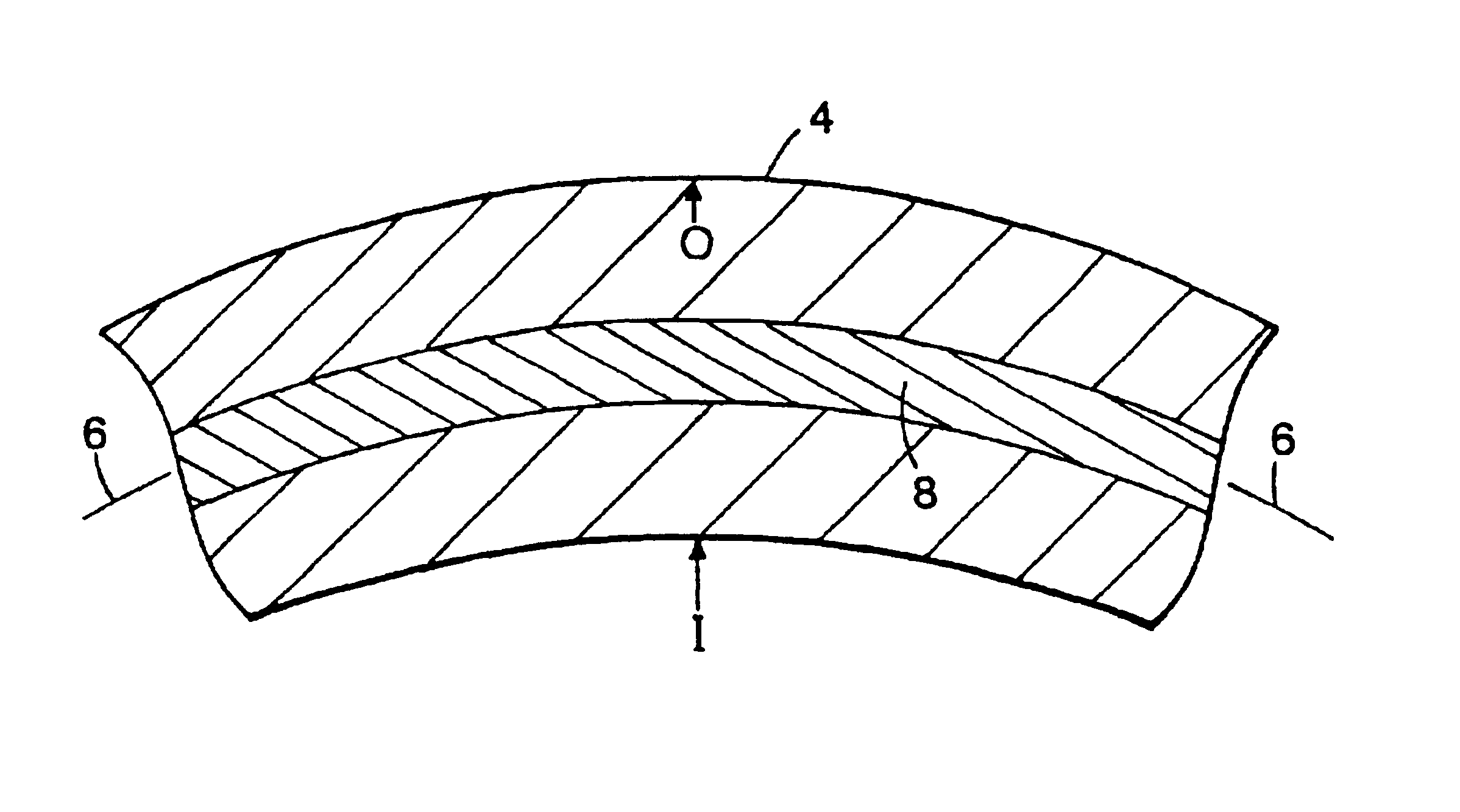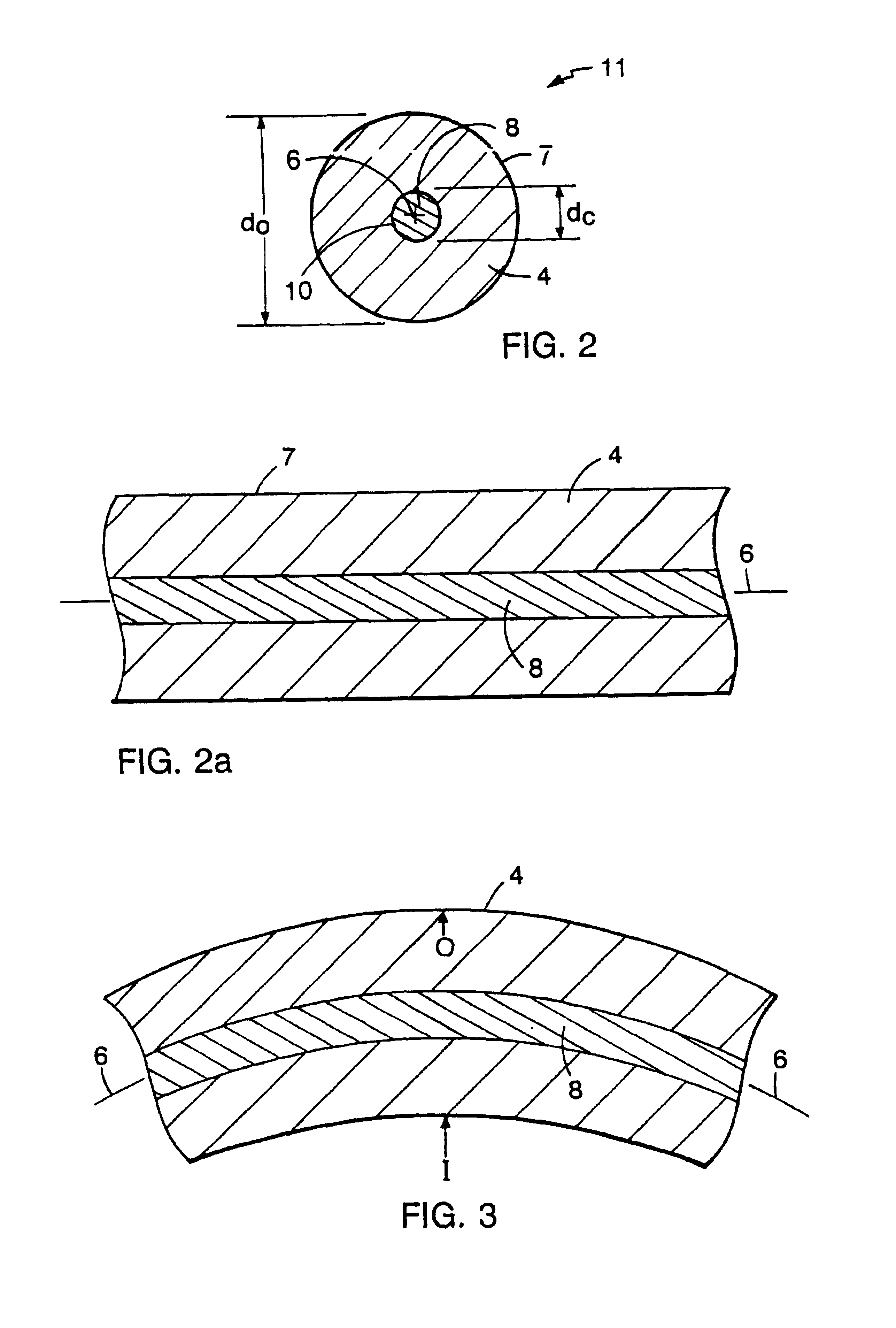Tubular medical endoprostheses
a technology of endoprosthesis and tubular tube, which is applied in the field of tubular endoprosthesis, can solve the problems of difficult to find properties in conventional wires, and achieve the effects of enhancing the radio-opacity enhancing the radio-opacity, and reducing the thickness of the filament-form member
- Summary
- Abstract
- Description
- Claims
- Application Information
AI Technical Summary
Benefits of technology
Problems solved by technology
Method used
Image
Examples
example
[0045]An elastic, radiopaque filament for use in a stent may be formed as follows. A 500 foot length of filament (0.0052 inch in diameter) having an outer member formed of a precursor of a nitinol (55% Ni / 45% Ti) superelastic alloy and a core material of tantalum (0.00175 inch in diameter) is formed by drilling a 0.25 inch diameter bore in a 0.75 inch rod of the outer member material and providing in the drilled lumen a tantalum member of substantially matched outer diameter. The rod is mechanically forged in a standard hot forging and rolling apparatus, then hammered such that no substantial voids between the core and outer longitudinal member are present. One end of the rod is sealed and the opposite end is cold drawn longitudinally through a die to the final diameter. Initially, the outer member of the filament is the precursor of a superelastic alloy, i.e., it has not been heat treated to impart the superelastic property under the anticipated conditions of use.
[0046]Referring to...
PUM
| Property | Measurement | Unit |
|---|---|---|
| Density | aaaaa | aaaaa |
| Density | aaaaa | aaaaa |
| Fraction | aaaaa | aaaaa |
Abstract
Description
Claims
Application Information
 Login to View More
Login to View More - R&D
- Intellectual Property
- Life Sciences
- Materials
- Tech Scout
- Unparalleled Data Quality
- Higher Quality Content
- 60% Fewer Hallucinations
Browse by: Latest US Patents, China's latest patents, Technical Efficacy Thesaurus, Application Domain, Technology Topic, Popular Technical Reports.
© 2025 PatSnap. All rights reserved.Legal|Privacy policy|Modern Slavery Act Transparency Statement|Sitemap|About US| Contact US: help@patsnap.com



